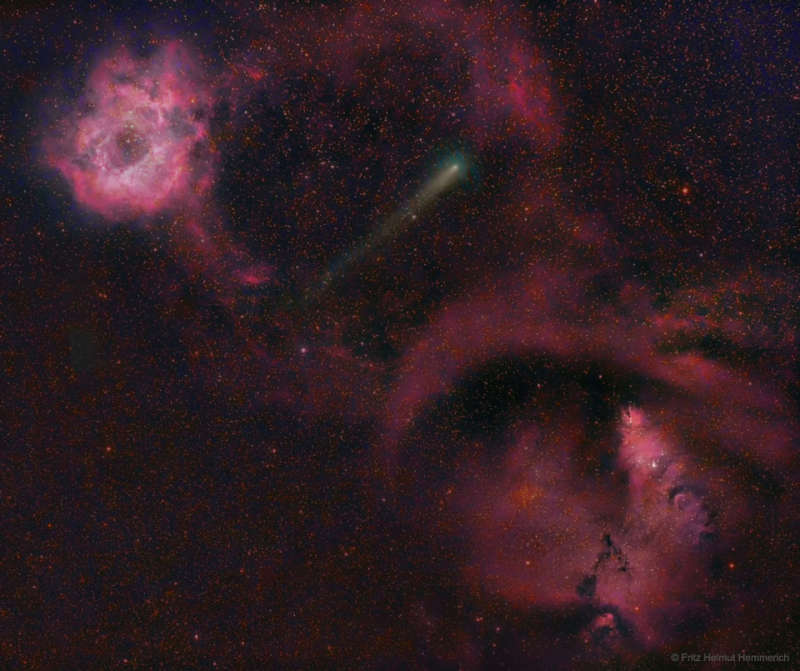Credit & Copyright: Fritz Helmut Hemmerich
Explanation:
Small bits of this greenish-gray comet are expected to streak across Earth's atmosphere
tonight.
Specifically, debris from the
eroding nucleus of
Comet 21P / Giacobini-Zinner, pictured,
causes the annual Draconids meteor shower, which peaks this evening.
Draconid meteors are easy to enjoy this year because meteor rates will likely
peak soon after sunset with the
Moon's glare nearly absent.
Patience may be needed, though, as last month's
passing of 21P near the Earth's orbit is
not expected to increase the Draconids' normal meteor rate this year of
(only) a few meteors per hour.
Then again, meteor rates are notoriously hard to predict, and
the Draconids were quite impressive in
1933, 1946, and 2011.
Featured, Comet 21P gracefully posed between the
Rosette (upper left) and
Cone (lower right)
nebulas two weeks ago before
heading back out to near the orbit of
Jupiter, to return again in about
six and a half years.
1999 2000 2001 2002 2003 2004 2005 2006 2007 2008 2009 2010 2011 2012 2013 2014 2015 2016 2017 2018 2019 2020 2021 2022 2023 2024 2025 |
Yanvar' Fevral' Mart Aprel' Mai Iyun' Iyul' Avgust Sentyabr' Oktyabr' Noyabr' Dekabr' |
NASA Web Site Statements, Warnings, and Disclaimers
NASA Official: Jay Norris. Specific rights apply.
A service of: LHEA at NASA / GSFC
& Michigan Tech. U.
|
Publikacii s klyuchevymi slovami:
comet - Cone nebula - Rosette Nebula - komety - tumannost' Konus - Tumannost' Rozetka
Publikacii so slovami: comet - Cone nebula - Rosette Nebula - komety - tumannost' Konus - Tumannost' Rozetka | |
Sm. takzhe:
Vse publikacii na tu zhe temu >> | |
